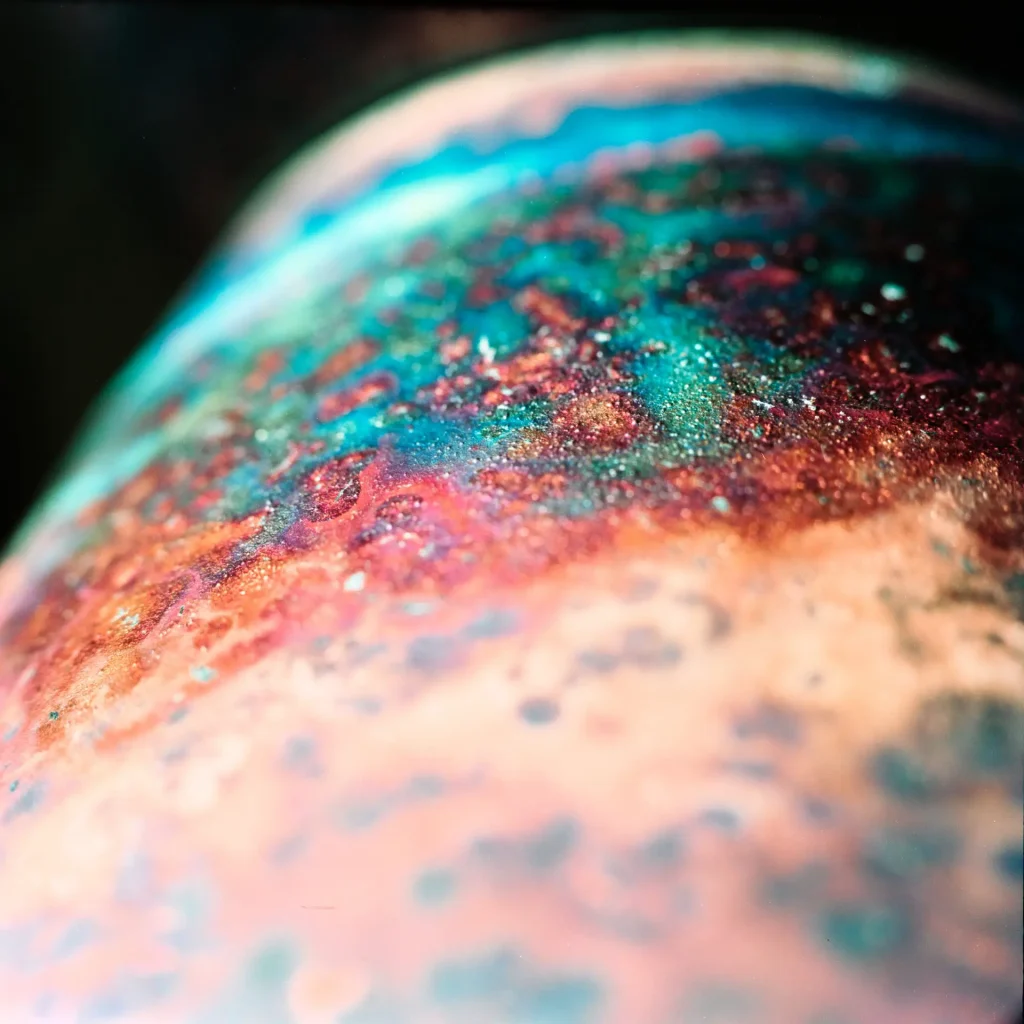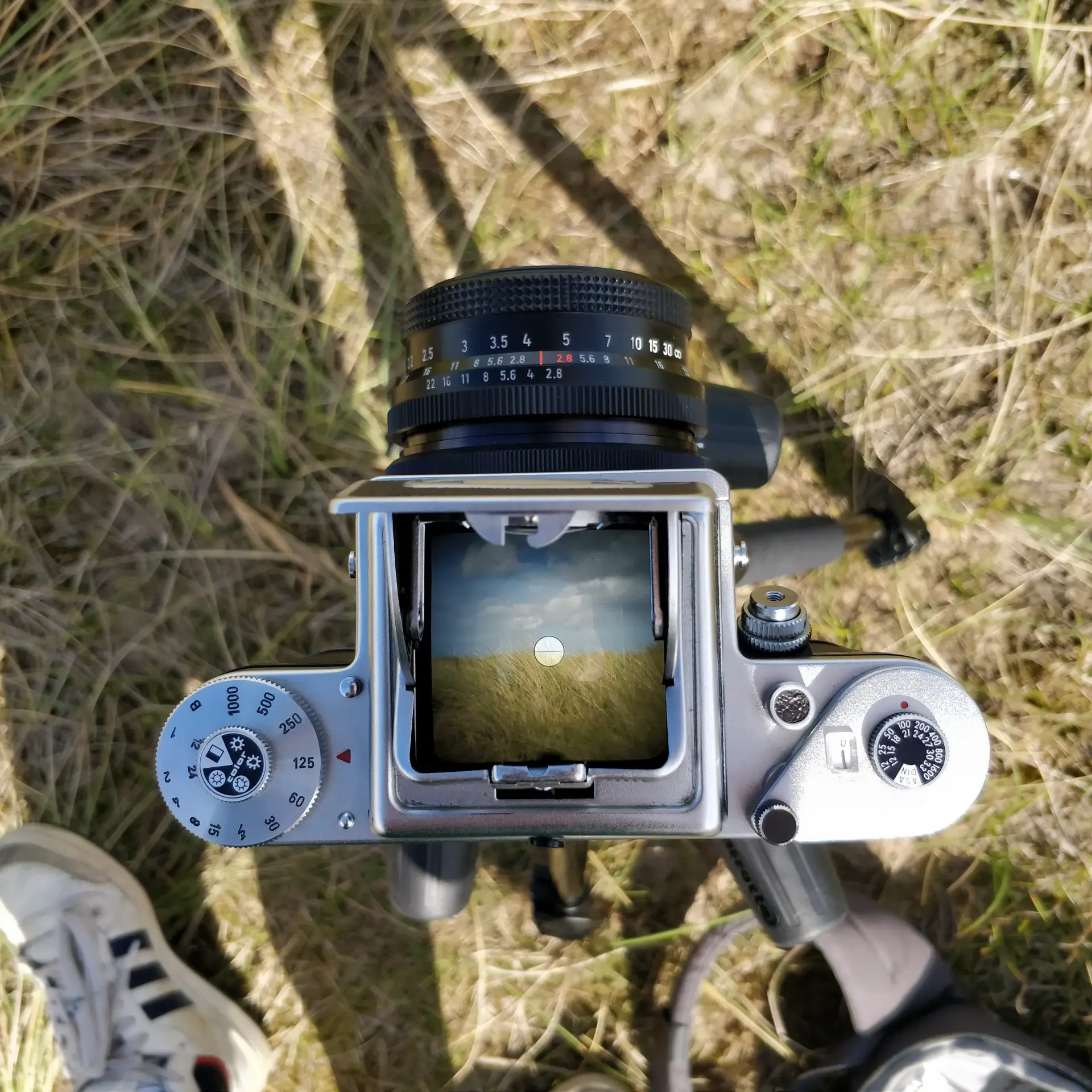I was so pleased by the positive response to my previous mini review of the Pentacon Six that I thought I would provide a little update on how my journey with it is going. If you are interested in reading that first part you can find it here.
Something that I didn’t do before is explain how I came to own my Pentacon Six. I hadn’t even finished shooting my first roll of 35mm film* when I was overcome with the joy of shooting manually and went wild learning about the different formats and different cameras and I came across Ted Forbes videos on his channel The Art of Photography. I took a punt and bid on a camera from the Ukraine. And, in the interest of sharing good resources, anyone who has or is thinking about getting a Pentacon Six needs to know about the Pentacon Six website – a treasure trove of information and the first place I go with any questions on my equipment.
*I know this because there is a photo of the Pentacon at the end of that first roll!

I really wanted to share this story because, as I have been learning to develop at home and looking closer at my negatives, I have come to realise that if I knew then what I know now the camera probably would have been put to one side and not used again. I’ve mentioned before that before developing at home I would shoot the roll, send it off and then look at the images on the computer, which meant that I wasn’t checking the negatives for any obvious issues and just assumed that anything that had gone wrong was my fault. I’ve been looking back through those first rolls and realise that there was a serious issue with spacing between shots. That coupled with the image counter not working, the 1/125 shutter speed being too slow and issues with massive over exposure (now known to be the 50mm lens being stuck wide open at f/4) would probably have made me give up on the camera. I’ve included pictures of the negatives so you can see.


As it is, I persevered and it paid off. The image counter and image spacing issues have resolved themselves, I’ve got a new 50mm lens and I just avoid 1/125sec. I also mentioned that I’m now working on my technique and it’s paying off. My success rate is climbing and I’m really pleased with the results I’m getting.
At the end of the last review I had just acquired and started experimenting with new lenses and accessories including extension tubes and filters. You can see a post here which takes you through a whole roll, explaining my tests on metering methods, using the yellow filter and trying out the extension tubes.


Having tried out the TTL metering prism I’ve decided to stick with the handheld meter as the images using the prism are way overexposed – the negatives are almost black and from those rolls the best shots were the ones I metered manually. Just a note, the prism does not set your shutter speed or aperture for you, it just meters the scene through the lens and gives you a reading so that you can set the camera. (The final 4 images on each of the below sets of negatives was made using the prism).



Having tried both the bellows and the extension tubes I would say the tubes are far easier. I may have to have some more practise with the bellows but my personal opinion is that the bellows made the focusing screen too dark to use whereas I could actually see the screen with the tubes. Should there be a difference? I can’t think of a good reason so further experimentation is necessary.
The 80mm lens has fast become my favourite. On 35mm I’ve always felt the 50mm was the most natural so it follows that for medium format 80mm feels good. It’s also rather handy that this is the smallest of the lenses which helps to keep the weight down when out and about.

I’m always frustrated by reviews of gear from people who’ve used a camera once or twice so I really hope you enjoy this mini review from someone who is really trying to get to know the ins and outs of the camera. If you’d like to see more of my work or follow along with my learning journey you can find my learning log here and my Instagram here.
Share this post:









Comments
Lee on Pentacon Six Mini Review – Getting to Know the Camera – Part 2 – By Holly Gilman
Comment posted: 27/10/2020
Comment posted: 27/10/2020
James Langmesser on Pentacon Six Mini Review – Getting to Know the Camera – Part 2 – By Holly Gilman
Comment posted: 27/10/2020
Comment posted: 27/10/2020
Rock on Pentacon Six Mini Review – Getting to Know the Camera – Part 2 – By Holly Gilman
Comment posted: 27/10/2020
Comment posted: 27/10/2020
Harry Machold on Pentacon Six Mini Review – Getting to Know the Camera – Part 2 – By Holly Gilman
Comment posted: 27/10/2020
The Pentacon 6 is more basic and back to the roots though those roots the camera never evolved from. I say this with respect. And it is priced to be used, a second or third body is nothing in terms of its price on the market. I consider getting a Leica S2, in exchange for another Leica of mine. bUt this camera I will use exclusively with P6 lenses, of different sort. my beloved father used a Praktisix in the early 60ies, smuggled out of Eastern Germany...
Please us with more and let us all follow your journey with this wonderful camera!
Comment posted: 27/10/2020
Boris on Pentacon Six Mini Review – Getting to Know the Camera – Part 2 – By Holly Gilman
Comment posted: 27/10/2020
The 1/125 shutter speed is usually the first one to slow down on the Pentacon six. You may avoid it for a while, but it is probably time for a service.
Comment posted: 27/10/2020
Clive W on Pentacon Six Mini Review – Getting to Know the Camera – Part 2 – By Holly Gilman
Comment posted: 28/10/2020
There’s a magical point in a relationship with some machines, where we stop thinking about the machine and just enjoy using it. That may be less likely with a forty-year-old film camera, because there’ll usually be something that requires some extra thought. So regarding those foibles as charming quirks rather than grounds for divorce can make all the difference. Sounds like you and the Pentacon are heading in the right direction.
Comment posted: 28/10/2020
Lee on Pentacon Six Mini Review – Getting to Know the Camera – Part 2 – By Holly Gilman
Comment posted: 28/10/2020
How do you suppose the shot counter and frame spacing issues resolved themselves? Did you change how you were using the camera in any way? I've read that such issues can occur with this camera if you let the film winding lever slap back on its own after winding to the next frame. Thank you.
Comment posted: 28/10/2020
Daniel on Pentacon Six Mini Review – Getting to Know the Camera – Part 2 – By Holly Gilman
Comment posted: 28/10/2020
However, even with these issues that Carl Zeiss 80mm lens is awesome and I love using it.
Good luck and I look forward to reading more.
Comment posted: 28/10/2020
Max on Pentacon Six Mini Review – Getting to Know the Camera – Part 2 – By Holly Gilman
Comment posted: 02/03/2021
thank your for the review, however it sounded to me like you are a bit diappointed. I have a Pentacon Six myself and I am very happy with it.
Regarding the spacing, did you ver get it CLA serviced? I got mine serviced and it works very well and also, do not let the film advance lever slap back, this will mess up the spacing on the fim.
Also I am curious what your expiereince with the metering prism is, for me it was not nearly accurate enough, I prefer using a handheld one.
Anyways, I am hoping for new reviews
Comment posted: 02/03/2021
Matt Ganley on Pentacon Six Mini Review – Getting to Know the Camera – Part 2 – By Holly Gilman
Comment posted: 25/02/2023
Thanks.